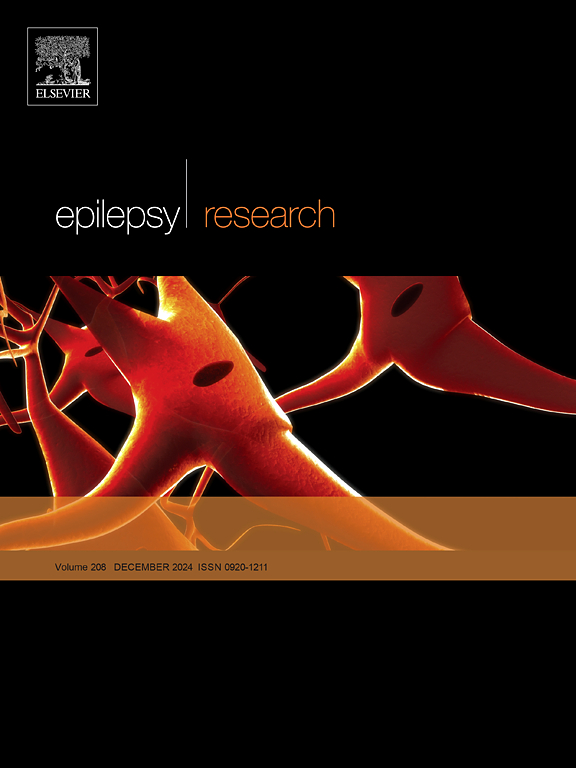时间原则:基于证据的儿童癫痫持续状态管理的时间滞后及其对临床结果的影响的综合评价
IF 2
4区 医学
Q3 CLINICAL NEUROLOGY
引用次数: 0
摘要
小儿癫痫持续状态(SE)是一种危及生命的、时间敏感的神经系统急症。儿科SE患者的适当治疗是具有挑战性的,特别是当考虑到时间的原则。各种临床试验和研究[特别是目前最重要的随机对照试验之一ESETT (Established Status Epilepticus Treatment Trial)]比较了3种抗癫痫药物(asm)对SE患者的疗效,为临床实践提供了有力的证据。细致的护理分析是儿科SE最佳管理的重要组成部分。我们对记录的不遵守和偏离标准治疗指南(STGs)的情况进行了基于证据的综合评估,重点关注从儿童SE发病到ASM给药以及升级到后续分类的时间。我们在现实世界的临床实践中发现了显著的差距。文献综述和对12项儿童SE研究的汇总分析显示,院前到SE治疗的时间为29.5 分钟。到达EMS和入院时间分别为23 分钟和48 分钟。从SE发病到一线ASM给药的时间为25.5 分钟,而循证指南推荐的时间为5-10 分钟。在二线和三线ASM给药中也观察到类似的延迟。我们回顾了影响时间延迟的因素和对临床结果的影响。本综述还强调了质量改进途径,可能有助于改善儿科SE治疗的时间和相关结果。本文章由计算机程序翻译,如有差异,请以英文原文为准。
Tenets of timing: An evidence based comprehensive review on time-lag in the management of pediatric status epilepticus and its effect on clinical outcomes
Pediatric status epilepticus (SE) is a life-threatening, time-sensitive neurological emergency. The adequate treatment of pediatric patients with SE is challenging, especially when the principles of time are considered. Various clinical trials and studies [especially one of the most important randomized controlled trials of the present time, ‘ESETT (Established Status Epilepticus Treatment Trial)’] compared the effectiveness of 3 antiseizure medications (ASMs) in patients with SE, providing robust evidence for clinical practice. Meticulous analysis of care delivery is an essential component as far as optimal management of pediatric SE is concerned. We performed an evidence-based comprehensive review on documented non-compliance and deviations from standard-treatment guidelines (STGs), focusing on time-elapsed from pediatric SE onset to ASM administration and escalation to subsequent classes. We have found significant gaps in real-world clinical practice. A literature review and a pooled-analysis of 12 studies on pediatric SE showed prehospital time to SE treatment was 29.5 minutes. Time to EMS arrival and hospital admission was 23 minutes and 48 minutes, respectively. Time-elapsed from SE onset to first-line ASM administration was 25.5 minutes, compared to evidence-based guidelines recommended time of 5–10 minutes. Similar delays were also observed in second- and third-line ASM administration. We have reviewed the factors affecting time-delays and impact on clinical outcomes. This review also highlights quality-improvement avenues that may help in improvising time for SE treatment and associated outcomes in pediatrics.
求助全文
通过发布文献求助,成功后即可免费获取论文全文。
去求助
来源期刊

Epilepsy Research
医学-临床神经学
CiteScore
0.10
自引率
4.50%
发文量
143
审稿时长
62 days
期刊介绍:
Epilepsy Research provides for publication of high quality articles in both basic and clinical epilepsy research, with a special emphasis on translational research that ultimately relates to epilepsy as a human condition. The journal is intended to provide a forum for reporting the best and most rigorous epilepsy research from all disciplines ranging from biophysics and molecular biology to epidemiological and psychosocial research. As such the journal will publish original papers relevant to epilepsy from any scientific discipline and also studies of a multidisciplinary nature. Clinical and experimental research papers adopting fresh conceptual approaches to the study of epilepsy and its treatment are encouraged. The overriding criteria for publication are novelty, significant clinical or experimental relevance, and interest to a multidisciplinary audience in the broad arena of epilepsy. Review articles focused on any topic of epilepsy research will also be considered, but only if they present an exceptionally clear synthesis of current knowledge and future directions of a research area, based on a critical assessment of the available data or on hypotheses that are likely to stimulate more critical thinking and further advances in an area of epilepsy research.
 求助内容:
求助内容: 应助结果提醒方式:
应助结果提醒方式:


